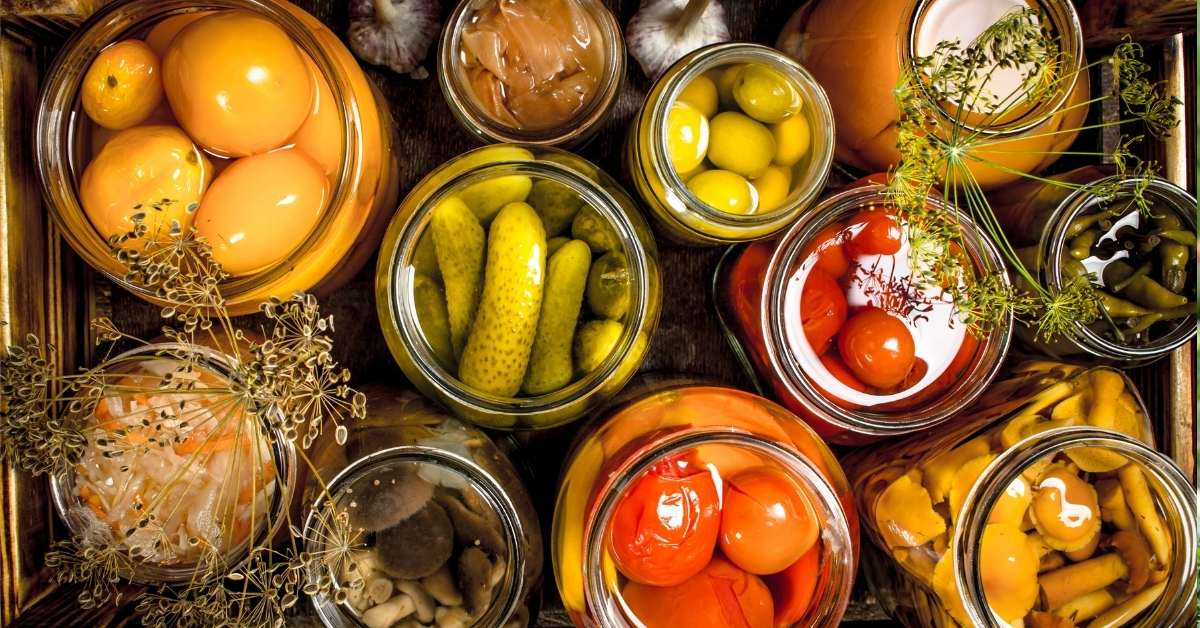When creating food storage for crisis preparedness, canned foods are always on the list. You can stock up on commercially canned food items, but you can also can your own foods for storage at home. Canning is a fun, easy, and rewarding activity that gives that feeling of satisfaction that you’re self-reliant, as long as you know the proper and safe home canning methods.
If you have a garden, knowing how to safely can your garden bounty is a great way to make your produce last as long as possible. When taking advantage of food sales during times of the year when certain foods are fresh and plentiful, the best way to preserve them is by canning.
Home-canned foods can last many years; their shelf life is the same as the shelf life of commercially canned foods (in jars) – that is, almost indefinitely. Just as long, of course, as proper canning methods are strictly followed.
Canning Methods for home use
There are two canning food preservation methods:
- 1. water bath canning
- 2. pressure canning
Water bath canning is used for high acid foods like fruits, rhubarb, and some varieties of tomatoes. There are low-acid varieties of tomatoes, so be sure you know what you have before canning.
You can use pressure canning for low acid foods such as vegetables, meats, legumes, seafood, and poultry.

12 Safe Home Canning Tips
Follow these canning rules for safe home-canned foods.
1. Use only 1-quart canning jars or smaller when home canning. Trying to process larger quantities of food is unsafe because home canning technology can’t guarantee that the food is sufficiently heated through for the required time.
If the jar is too large, chances are, the food on the outside will overcook while those on the inside won’t get hot enough. This will provide botulism spores an ideal environment where they can survive and thrive. Botulism poisoning is extremely rare but, if not treated immediately, can be fatal.
2. Don’t use recipes you’ve made up when canning or even recipes handed down to you by your grandparents or parents. These canning recipes may no longer be safe or up to current standards.
Only use modern canning recipes that are based on USDA recommendations. Recipes from University Extension services, the Ball Blue Book, and the USDA are tested and approved.
3. Raw packing is NOT safe for specific foods: all kinds of greens, beets, squash, okra, white potatoes, stewed tomatoes, and tomato/okra combination.
4. After putting the jars in, start counting the processing time only after the water comes to a good rolling boil (if using a water-bath canner) or after steam has vented for 10 minutes (if using a pressure canner).
5. Water bath canning should be used only for high acid foods: fruits, rhubarb, and some varieties of tomatoes, jams/jellies, pickles, and sauerkraut. Use a pressure canner for vegetables, meats, stews, and other low acid foods.
6. Do not use French-type antique canning jars. Use only modern, regular ones like Ball or Kerr jars as these are safer.

7. Always allow the correct amount of head-space between the food (and the liquid covering it) and the jar lid.
8. Lids are for one-time use only (though the bands are reusable). Used jar lids are not reliable for proper sealing. Screw bands that are rusty, bent, or damaged in any way should be discarded and replaced.
9. Make sure that the canning jars are in perfect condition. Every year, before you start to scan, run your finger around the jar rims to check for nicks. Even the tiniest crack makes the jar unsuitable for safe canning because it won’t seal properly.
10. Follow the recipe’s recommended processing time strictly.
11. Use a jar lifter to lift each jar out of the canner individually. Don’t lift the rack with the jars inside. Keep each jar upright when lifting them out.
12. Any jar that doesn’t seal should be reprocessed or placed in the refrigerator and consumed in a week or so. When reprocessing a jar, replace the lid with a new one.
Follow the above tips and ensure your home-canned foods are safe. You don’t want your stored food to endanger your health in a time of emergency.

